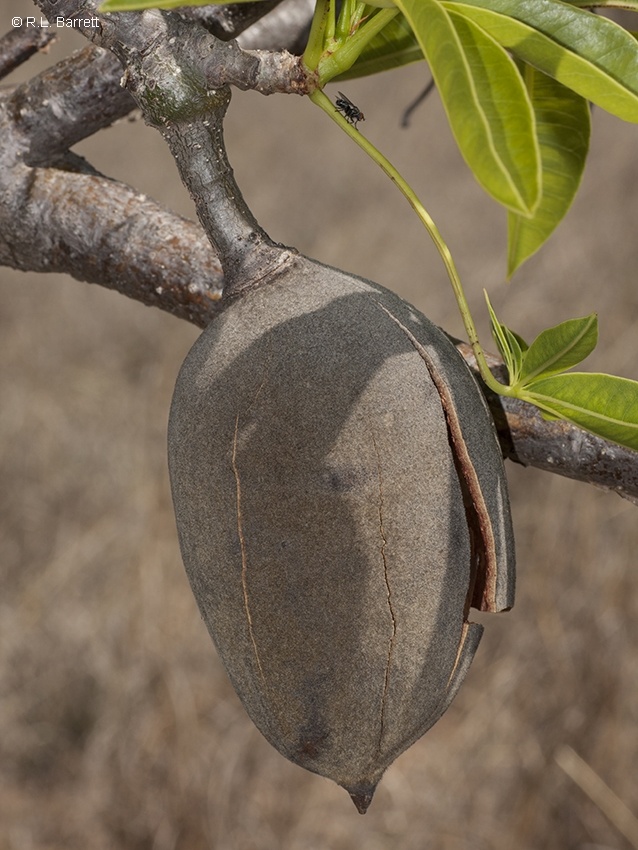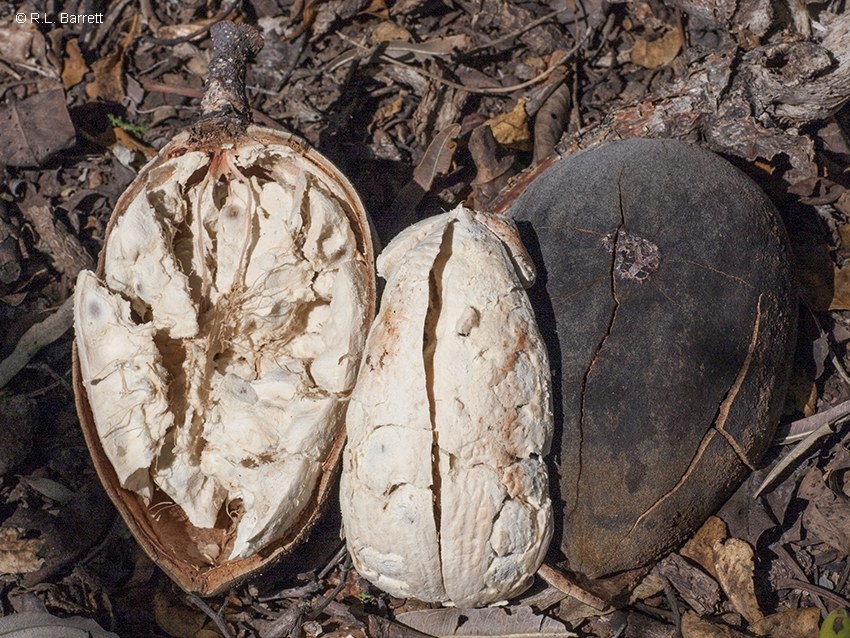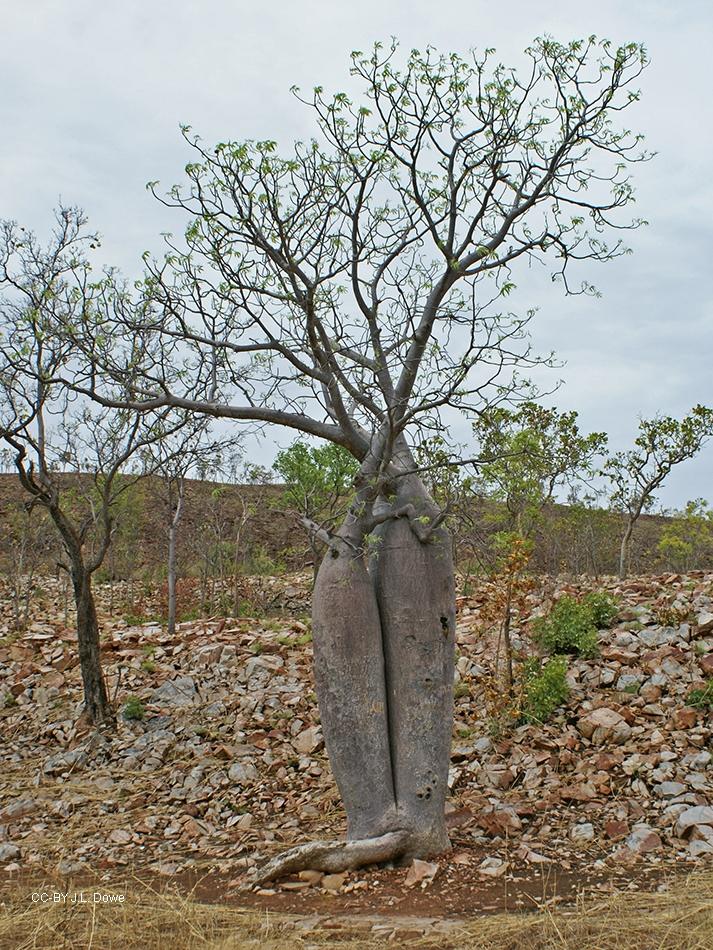Australian Tropical Rainforest Plants - Online edition
Adansonia gregorii F.Muell.









Mueller, F.J.H. von (1857) Hooker's Journal of Botany & Kew Garden Miscellany 9 : 14. Type: In planitiebus orariis et ripariis ad flumina Victoria et Fitzmaurice, ad promontorium Point Pearce albique. F. Mueller?.
Boab; Baobab Tree; Boabab; Cream of Tartar Tree; Gourd-gourd Tree; Gouty Stem; Sour Gourd; Bottletree; Baobab
Stem swollen, +/- bottle-shaped on small trees but almost spherical on large trees. Deciduous; leafless for a period in the dry season, between July and October.
Leaflet blades about 6.5-12 x 2.5-4.5 cm, +/- sessile or very shortly stalked, apex acuminate, base attenuate, about 5-8 in each compound leaf. Midrib raised on the upper surface of the leaflet blade. Stipules narrowly triangular, about 0.5 cm long, tapering to a fine point. Stipules caducous. Terminal buds and young shoots clothed in pale silky hairs.
Flowers large, opening at night, calyx about 6 cm long and densely sericeous on the inner surface. Petals spathulate, about 11-12 cm long, sericeous towards the apex on the abaxial surface. Anther filaments fused together for the lower half but free for about 30-70 mm. Style approximating the stamens.
Fruits globular or ellipsoid, about 10 x 4 cm or larger. Outer surface usually velvety. Seeds surrounded by a mealy acidulous edible pulp. Seeds reniform, about 10-11 x 8 mm. Cotyledons crumpled and folded many times.
Root thickened, carrot-like (Daucus carota). Cotyledons large, about 40 x 35 mm, with 3-5 veins radiating from the petiole. At the tenth leaf stage: leaves consist of about 3-5 leaflets radiating from the apex of the petiole; leaflets obovate, apex apiculate or acuminate, base attenuate; stipules narrowly triangular tapering to a fine point. Seed germination time 39 to 143 days.
Endemic to Australia, widespread in WA and the western part of NT. Altitudinal range from sea level to about 300 m. Usually grows in open forest, often in rocky areas but also found in monsoon forest. This is the famous Boab or Boabab Tree, the characteristic tree of the Kimberley Region.
This is the famous Boab or Boabab Tree of the Kimberly Region of Western Australia and the neighboring Northern Territory. The trees have been used for a variety of purposes from letter boxes to jails. One of more remarkable features of these trees is their ability to retain survey marks and even quite complex inscriptions in a legible state over periods of more than 100 years.
Aboriginal usage: The root fibres are made into string. Aboriginal people suck the white pith in the fruit, which tastes like sherbet and is very refreshing. The seeds are ground into a white paste. The fruits are frequently etched or decorated and sold to tourists. Kenneally et al. (1995).





